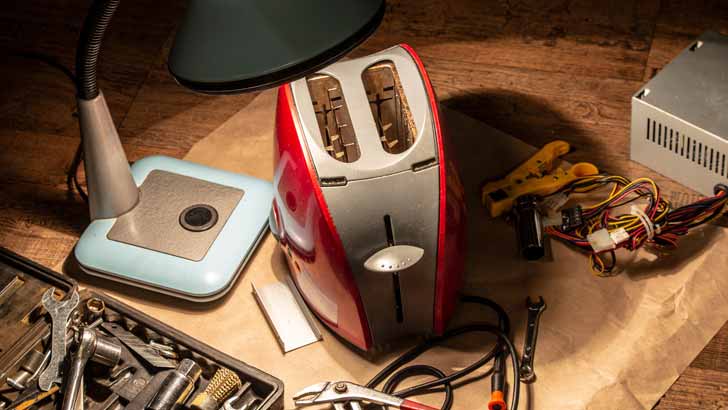The self-repair movement resurrecting the virtue of fixing things
By Susan Hely
I love Hills Industries. The company, based in Adelaide, has come to my rescue time and again when I needed spare parts to repair various products.
Hills's philosophy is to make long-lasting products. Its spare parts service posted out a seal and valve kit for my Hills garden sprayer in a matter of days for a few dollars.
Last year it was a new part for my folding-frame clothesline and years ago a new swing seat for my kids' outdoor play gym. Weber similarly builds its barbecues to last and repairing them is just part of the service.
I love to fix things rather than throw them away. I save a fortune and it brings a gratifying feeling because broken hardware ends up in landfill and that's not so good for the planet. Australians send around 24 million tonnes of rubbish to landfill.
Not every product in my house is built to last. Recently the refrigerator repairman told me I should consider buying a new fridge in the next year or so because "they are not built to last".
It is only four years old. My former fridge lasted for 20 years. What happens to the metal, plastic and gas in the fridge? Unless it goes to a recycling company it ends up in landfill.
Repairing broken goods is recycling. The focus tends to be on recycling paper, plastic, glass and cans rather than fixing goods. My grandparents never threw anything away and could fix most things.
Instead we live in a disposable society where goods are chucked out when they break, become obsolete or are upgraded, particularly electronics such as phones and computers.
Repair it

However, there is a self-repair movement that has resurrected the old-fashioned virtue of fixing things.
You can learn how to repair your stuff at many websites and YouTube tutorials. There are fix-it collectives started by people who want to learn how to mend things.
One useful website is ifixit.com, which offers free step-by-step illustrated repair manuals to fix bikes, cameras, mobiles, musical instruments, sporting goods, toys, game consoles and much more. It also sells parts and tools.
Co-founder of ifixit.com, Kyle Wiens, says the site has helped hundreds of thousands of people around the world to repair goods. He says if we double the life of electronic goods, we'll cut our e-waste in half.
Presently 100 million tonnes of e-waste is shipped illegally to Africa alone each year for raw materials such as copper to be stripped from it. This exposes plenty of people to lots of toxic chemicals.
Another site is Appliantology.org, described as the Samurai Appliance Repair Academy.
Once you join you can register as a "grasshopper" and start a new topic in the Kitchen or Laundry repair forum. You can move on to become an Apprentice, which grants you access to appliance service manuals. A friend of mine used it to fix his dishwasher.
But before you get carried away, you need to heed warnings on the back of many appliances about the risks of tampering. Depending on the nature of the repair and your skill level, be aware there may be dangers. It's clearly not for everyone.
Give it away
If you are upgrading, consider donating electronic goods or putting them up for collection on a free online classifieds site such as gumtree.com.au or freecycle.org. Check with your local council about e-waste collection drop-off days.
You can get rid of television sets, computers, hard drives, printers, scanners, cords, cables, toasters, microwaves, headers and household batteries. See your local council's website or phone it to find out more about collection days for your e-waste.
Check Mobile Muster to find your nearest drop-off point for recycling mobile phones, chargers and batteries. There are 4500 local collection points around Australia - usually where you buy phones.
Or you can mail your phone in a free post bag. Since 1998 Mobile Muster has recycled 886 tonnes of mobile phones, including 6.34 million handsets and batteries. Find printer cartridge drop-off locations via PlanetArk.org.
Get stories like this in our newsletters.



